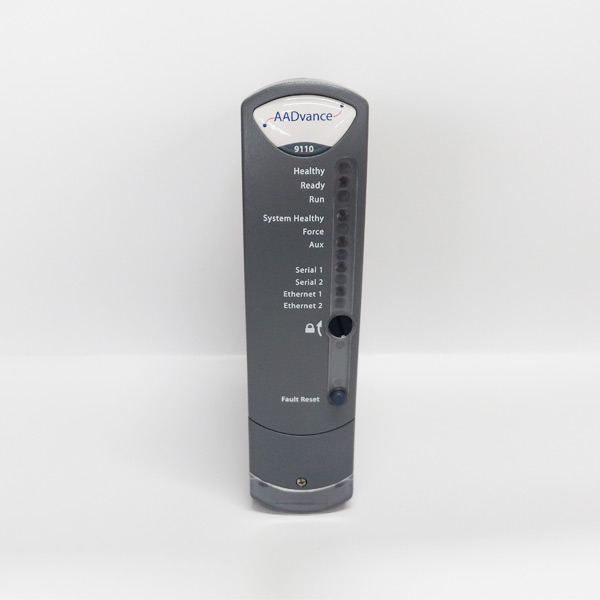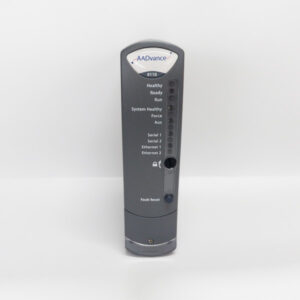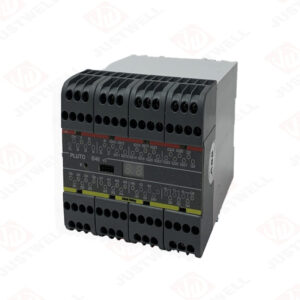Description
T9110 Processor Module – Triconex’s Triple-Redundant Brain That Just Refuses to Die
Back in 2017, I walked into a gas compression station in Oman. The control room looked like it hadn’t been dusted since the ’90s, but sitting right there in the rack — still pulsing green LEDs after all those years — was a Triconex T9110 processor module.
That thing had been running nonstop for over fifteen years. No firmware hiccups. No processor hang-ups. No “PLC not responding” alarms. I joked with the plant engineer that if this module were human, it’d already have tenure.
That’s the thing about T9110 — it’s not a flashy device, but when your process involves 100,000 barrels of flammable gas per day, you don’t want flashy. You want predictable. You want “boring.” You want something that just works every damn day.

T9110 processor module
Performance from the Field
Now here’s what most folks don’t appreciate until they’ve lived with one — Triconex T9110 doesn’t behave like your average PLC CPU. It’s a triple-modular-redundant (TMR) processor. That means there are three brains constantly voting on every calculation, cross-checking each other to make sure not even a cosmic ray can flip a bit without being caught.
In the plant, that translates to this kind of confidence: when one of the processors goes out for lunch (figuratively), the other two keep things humming without so much as a hiccup on the control side. I’ve literally pulled a processor card during maintenance — the system alarmed, sure, but didn’t trip. That’s design maturity.
Clock speed? Around 25 MHz, which sounds prehistoric until you realize this module isn’t about raw speed — it’s about determinism. Timing consistency matters more than horsepower when you’re dealing with Safety Instrumented Systems (SIS) that decide whether to shut down a reactor.
Technical Specifications (with commentary)
Here’s what I tend to note in my field books whenever we commission a T9110 processor module:
- System: Triconex TMR system
- Processor Type: Triple-redundant CPU architecture
- Memory: 4 MB non-volatile + 4 MB DRAM (split among the three CPUs)
- Backplane: Tricon Chassis bus, fully redundant
- I/O Handling: Supports up to 118 I/O modules per system
- Communication: Peer-to-peer via TriStation network
- Scan Time: Configurable, typically 25–250 ms
- Power Consumption: Approx. 10 W
- Operating Temperature: 0°C to 60°C
- Safety Integrity Level: SIL 3 certified per IEC 61508
The redundancy logic in this processor is the crown jewel. Each of the three microprocessors executes the same instruction set, and results are compared on a per-cycle basis. If one CPU gives a bad answer, it’s automatically voted out, but the system keeps running. That’s how the T9110 earned its reputation in refineries, LNG terminals, and power plants.
Real-World Case: When Things Got Hairy
Let me share a story.
In 2020, I was supporting a petrochemical site in Jubail. We had a trip event during catalyst regeneration — nasty business if it goes wrong. The Tricon system took over, executing the shutdown sequence flawlessly. After the dust settled, we ran diagnostics and found that one of the T9110 processors had logged a memory parity fault during the event. Two healthy CPUs overruled it instantly, process safe, no delay.
Now, that’s the kind of system behavior you only appreciate when you’ve lived through near-disasters. The engineers on site? They toasted that module with their evening tea. I still remember the smell of sulfur and the sound of relief in that control room.
How It Stacks Against Others
I’ve worked with Honeywell’s Safety Manager, HIMA’s HIMax, and Emerson DeltaV SIS. They all have their charm, but there’s something about the T9110’s simplicity that’s hard to beat. Configuration via TriStation 1131 software is as old-school as it gets — and that’s not a complaint. No fancy drag-and-drop; just logic that works.
If you compare side by side:
| Feature | Triconex T9110 | HIMA HIMax | Emerson DeltaV SIS |
|---|---|---|---|
| Architecture | Triple Modular Redundant | Quad Modular Redundant | Dual Modular Redundant |
| Safety Level | SIL 3 | SIL 3 | SIL 2–3 |
| Programming Tool | TriStation 1131 | SILworX | DeltaV SIS Logic Designer |
| Mean Time Between Failures (MTBF) | > 200,000 hours | ~150,000 hours | ~120,000 hours |
| Typical Lifetime | 20+ years | 15 years | 12–15 years |
Sure, the HIMA might be faster and newer, but I’ve yet to see a T9110 system go down from software corruption or internal failure. ABB, Siemens, and Yokogawa all have SIS options, but Triconex has a cult following for a reason — trust earned through uptime.
Maintenance Insights (Straight from the Field)
One of the best parts of working with T9110 is how forgiving it is during maintenance. You can hot-swap it, provided your voting logic is healthy. The key is to always check the Status LED sequence — solid green means you’re golden, blinking amber means one leg’s out of sync, and red… well, red means your weekend plans just got cancelled.
A few maintenance tips I’ve learned (usually the hard way):
- Always clean the backplane contacts with isopropyl alcohol before inserting a replacement. Dust and moisture are the silent killers.
- If you get a “MISMATCH” alarm after replacing, wait a minute — synchronization sometimes takes longer than you expect.
- Don’t power-cycle impatiently. The T9110 boots methodically. Think of it like an old professor — brilliant, but slow to get going.
- Keep firmware and configuration archives off the control network. TriStation backups are your lifeline if anything corrupts.
And yes — keep a spare. Finding a genuine Triconex T9110 processor module on short notice isn’t easy these days, especially with refurbished parts flooding the gray market.
Cost, Value, and Legacy
Let’s be honest: T9110 modules aren’t cheap. Even refurbished, they can hit USD 8,000–12,000, depending on condition. But compare that to a single unscheduled plant trip — I’ve seen losses hit a quarter-million dollars in under 10 minutes. Suddenly that price tag doesn’t look so bad.
What makes this module stand out is longevity. Many of these units installed in early 2000s plants are still running the same original processors. No firmware panic, no planned obsolescence. It’s like driving a diesel Land Cruiser in a desert — it’s not flashy, but it’ll get you home every time.
From a system evolution perspective, Triconex later moved toward the T9431 and T9802 modules, offering better diagnostics and faster memory, but I’ve met engineers who still prefer the T9110 because “it never lies.” That kind of loyalty doesn’t come from specs; it comes from years of trust built in the field.
When Things Go Wrong (and They Rarely Do)
Once, in a sulfur recovery unit in India, we had a mysterious watchdog reset issue. Three weeks of head-scratching later, it turned out not to be the T9110’s fault at all — a faulty grounding strap on the rack frame was inducing noise into the backplane. The processor’s diagnostics caught it before it cascaded into chaos. That’s when I stopped thinking of the T9110 as a “module” and started treating it as a partner.
That’s the funny thing about industrial automation: the longer you stay in it, the more you respect the stuff that stays invisible. When you don’t hear about a component for five years, it’s not forgotten — it’s doing its job flawlessly.
Final Thoughts
If I had to describe the Triconex T9110 processor module in one phrase, it’d be: boringly reliable. It doesn’t try to impress; it just keeps the process safe day after day, year after year. From LNG terminals to power plants, from refineries to offshore rigs, this module has been quietly guarding people and assets for decades.
The T9110 represents what’s best about old-school industrial engineering — function over fashion, resilience over revision, and a quiet confidence that’s hard to find in modern systems. I’ve trusted it with safety logic that could make or break million-dollar operations — and it never flinched.
If you’re lucky enough to find one in the rack, treat it with respect. It’s earned it.









